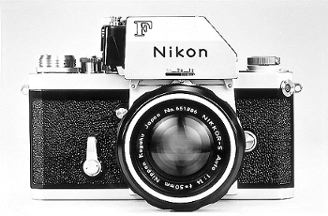Horse Battle Terror scenario: Aeschylus Persians 29-32
Looking for a scenario in Greek Tragedy which includes horses, battle and terror (δεινὸς) I landed in Aeschylus Persians 29-32. The greek text with translation:
Aeschylus, Persians 21-32
20 ...
οἷος Ἀμίστρης ἠδ᾽ Ἀρταφρένης
καὶ Μεγαβάτης ἠδ᾽ Ἀστάσπης,
ταγοὶ Περσῶν,
βασιλῆς βασιλέως ὕποχοι μεγάλου,
25 σοῦνται, στρατιᾶς πολλῆς ἔφοροι,
τοξοδάμαντές τ᾽ ἠδ᾽ ἱπποβάται,
φοβεροὶ μὲν ἰδεῖν, δεινοὶ δὲ μάχην
ψυχῆς εὐτλήμονι δόξῃ:
Ἀρτεμβάρης θ᾽ ἱππιοχάρμης
30 καὶ Μασίστρης, ὅ τε τοξοδάμας
ἐσθλὸς Ἰμαῖος, Φαρανδάκης θ᾽,
ἵππων τ᾽ ἐλατὴρ Σοσθάνης.
Such are Amistres and Artaphrenes and Megabates and Astaspes, marshals of the Persians; kings themselves, yet vassals of the Great King, [25] they press on, commanders of an enormous host, skilled in archery and horsemanship, formidable to look upon and fearful in battle through the valiant resolve of their souls. Artembares, too, who fights from his chariot, [30] and Masistres, and noble Imaeus, skilled with the bow, and Pharandaces, and Sosthanes, who urges on his steeds. — Herbert Weir Smyth (1857-1937).
In this scenario the terror is an attribute of the enormous host [στρατιᾶς πολλῆς], archers and horsemen [τοξοδάμαντές τ᾽ ἠδ᾽ ἱπποβάται] considered as a group. The host is fearful to look at [φοβεροὶ μὲν ἰδεῖν] and terrifying in battle [δεινοὶ δὲ μάχην]. The horses are part of the warfare/battle/combat scenario but not specifically in focus as subjects experiencing fear [φόβος] or terror [δεινὸς]. However, fear, terror and horses are all predictable members of the warfare/battle/combat scenario. Within this scenario the horses’ experience of the terrors of war would be assumed, inferential from the cognitive framework.
Aeschylus, Persians 21-32
20 ...
οἷος Ἀμίστρης ἠδ᾽ Ἀρταφρένης
καὶ Μεγαβάτης ἠδ᾽ Ἀστάσπης,
ταγοὶ Περσῶν,
βασιλῆς βασιλέως ὕποχοι μεγάλου,
25 σοῦνται, στρατιᾶς πολλῆς ἔφοροι,
τοξοδάμαντές τ᾽ ἠδ᾽ ἱπποβάται,
φοβεροὶ μὲν ἰδεῖν, δεινοὶ δὲ μάχην
ψυχῆς εὐτλήμονι δόξῃ:
Ἀρτεμβάρης θ᾽ ἱππιοχάρμης
30 καὶ Μασίστρης, ὅ τε τοξοδάμας
ἐσθλὸς Ἰμαῖος, Φαρανδάκης θ᾽,
ἵππων τ᾽ ἐλατὴρ Σοσθάνης.
Such are Amistres and Artaphrenes and Megabates and Astaspes, marshals of the Persians; kings themselves, yet vassals of the Great King, [25] they press on, commanders of an enormous host, skilled in archery and horsemanship, formidable to look upon and fearful in battle through the valiant resolve of their souls. Artembares, too, who fights from his chariot, [30] and Masistres, and noble Imaeus, skilled with the bow, and Pharandaces, and Sosthanes, who urges on his steeds. — Herbert Weir Smyth (1857-1937).
In this scenario the terror is an attribute of the enormous host [στρατιᾶς πολλῆς], archers and horsemen [τοξοδάμαντές τ᾽ ἠδ᾽ ἱπποβάται] considered as a group. The host is fearful to look at [φοβεροὶ μὲν ἰδεῖν] and terrifying in battle [δεινοὶ δὲ μάχην]. The horses are part of the warfare/battle/combat scenario but not specifically in focus as subjects experiencing fear [φόβος] or terror [δεινὸς]. However, fear, terror and horses are all predictable members of the warfare/battle/combat scenario. Within this scenario the horses’ experience of the terrors of war would be assumed, inferential from the cognitive framework.


0 Comments:
Post a Comment
Subscribe to Post Comments [Atom]
<< Home